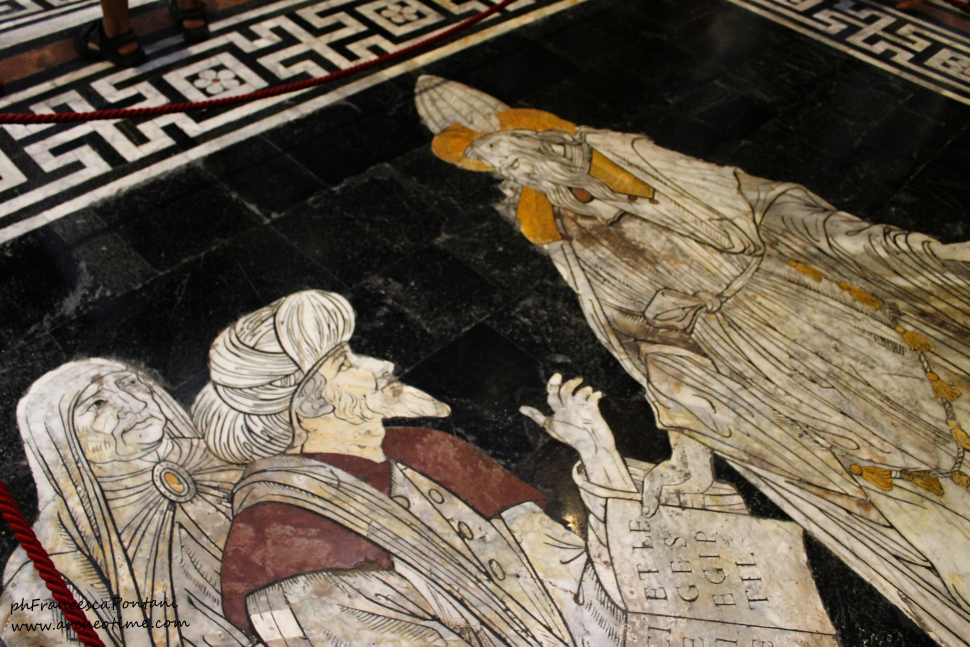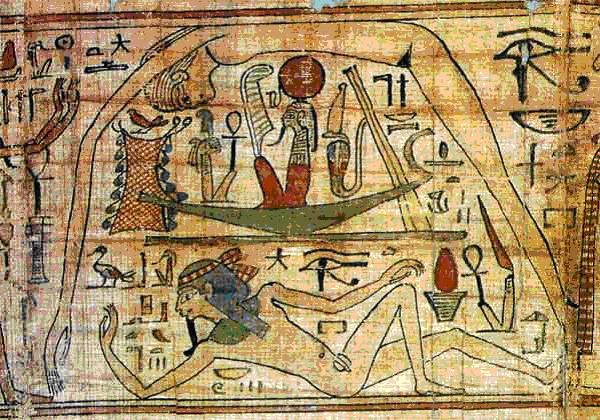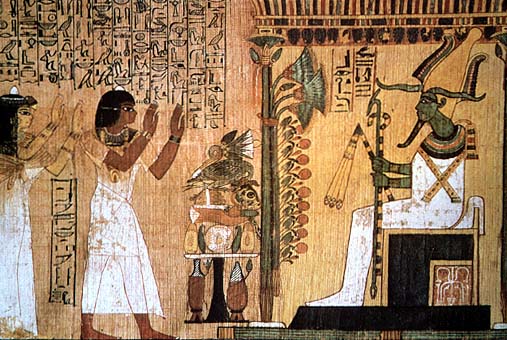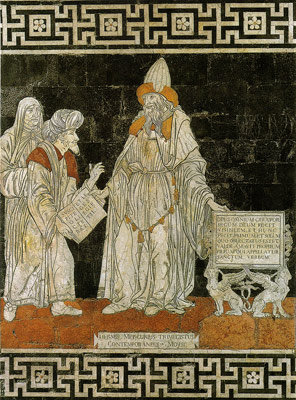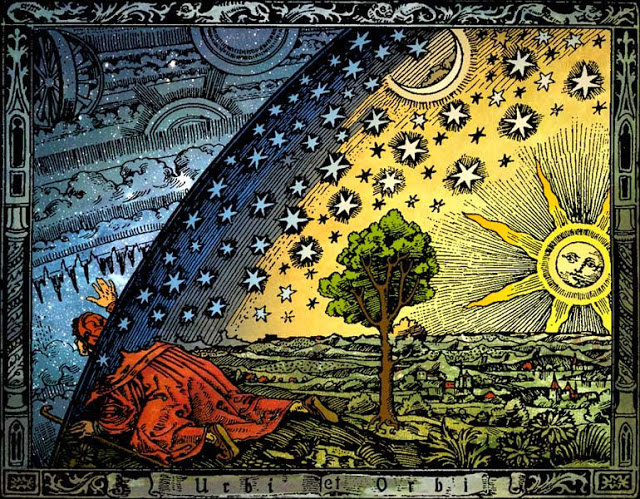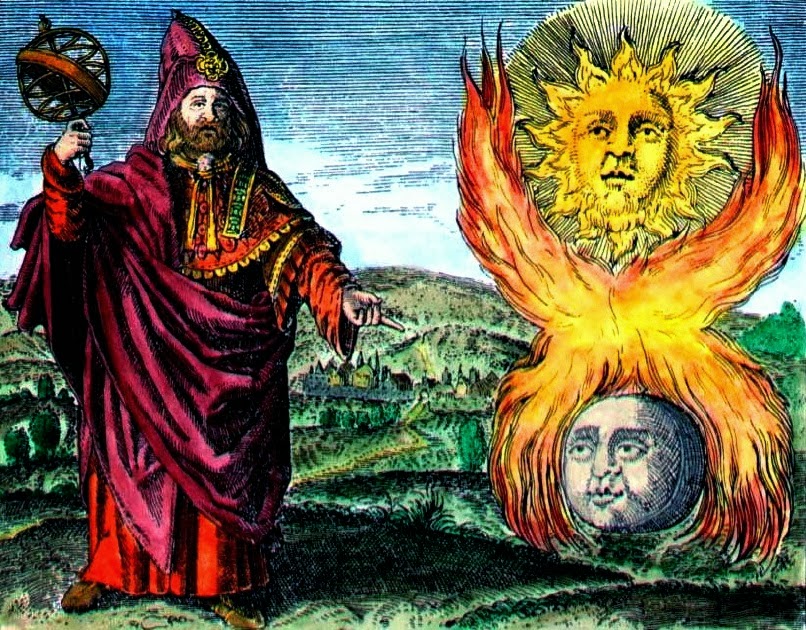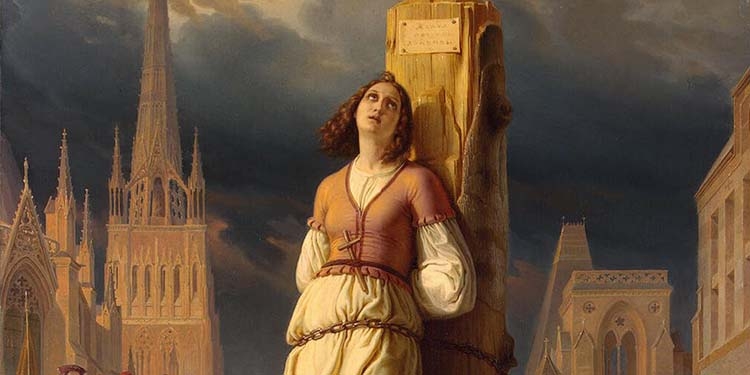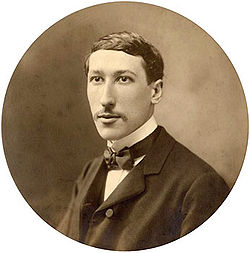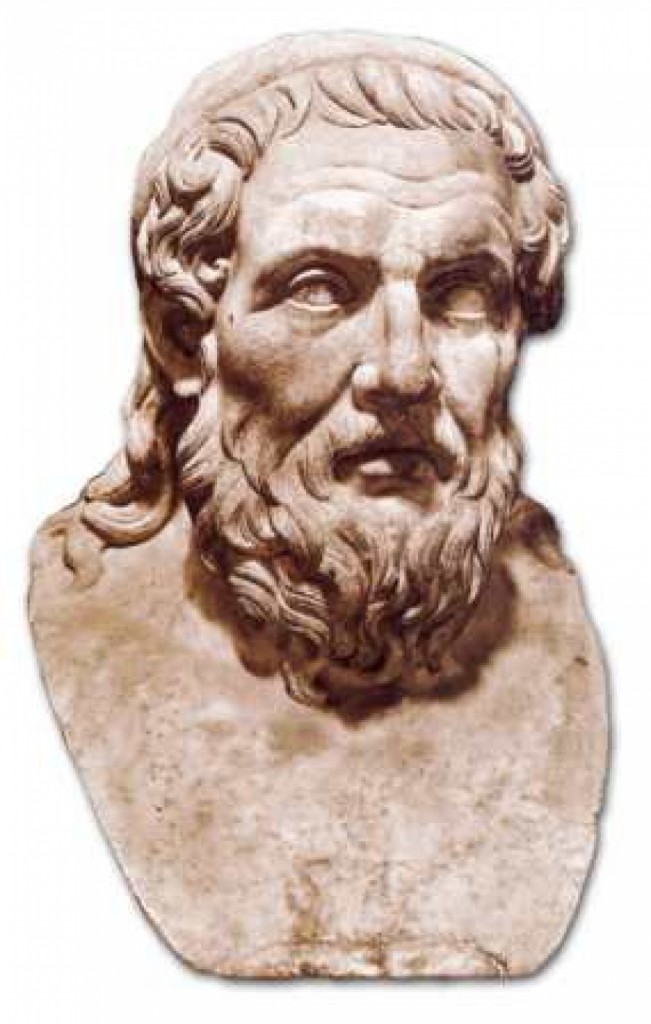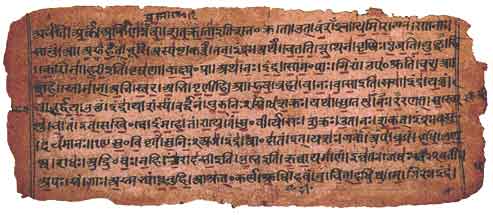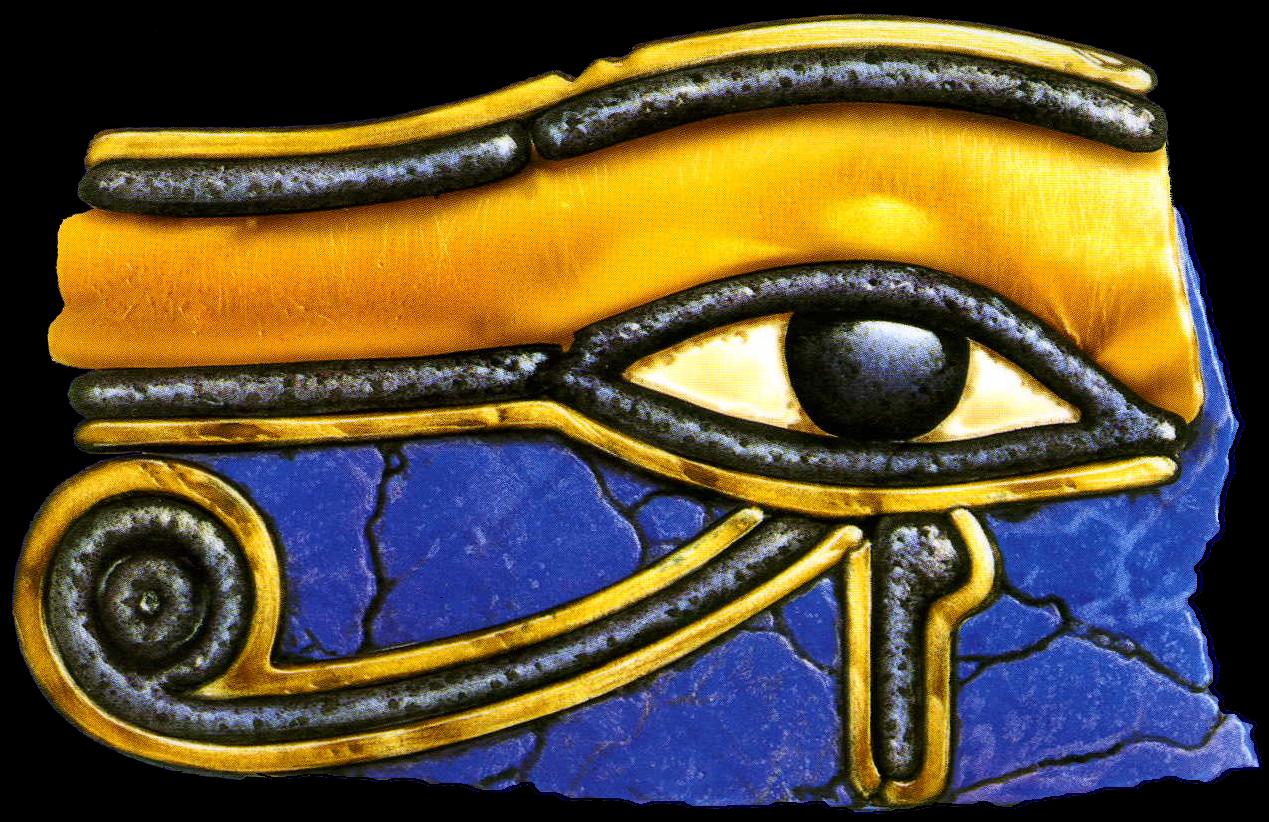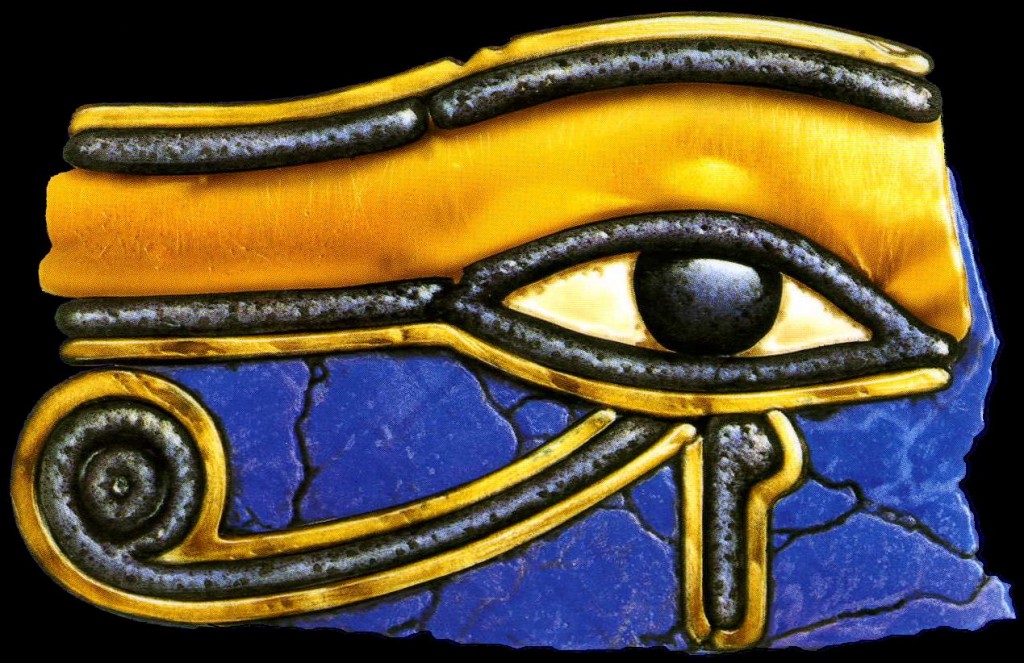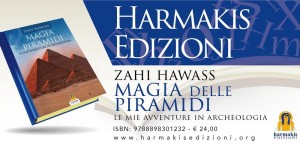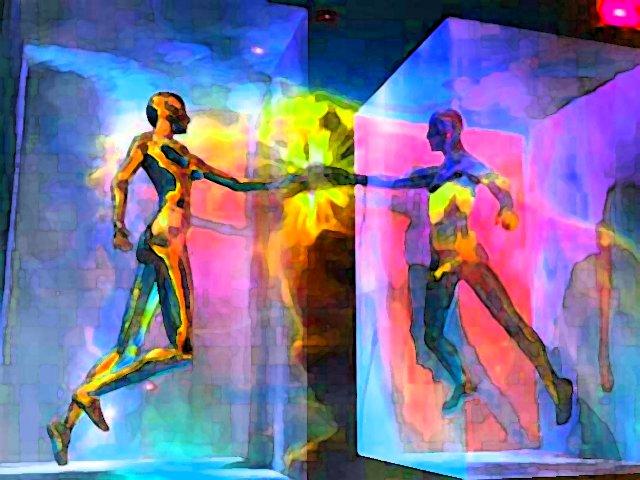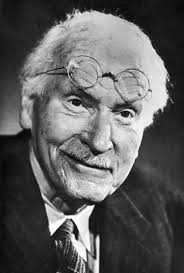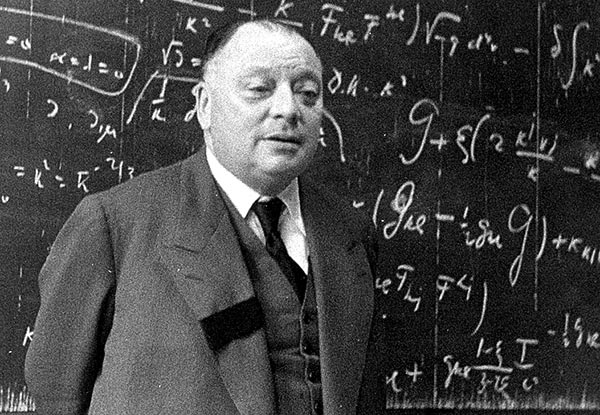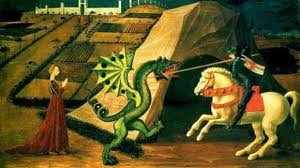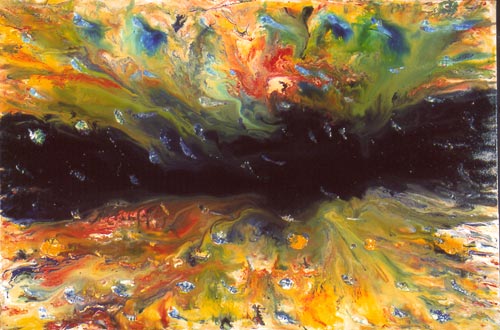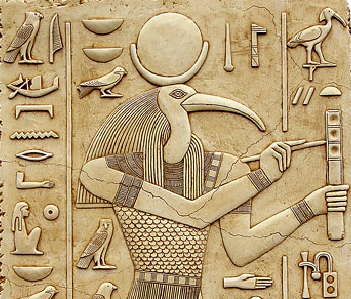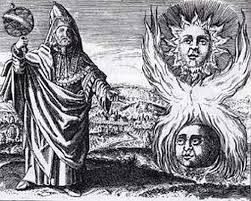
[:it]

Ora vi apro gli occhi e vi dico che il cibo è sacro quanto l’ostia, perché è tutta
la natura, è Dio stesso che lo ha preparato con la Sua quintessenza.
O. M. Aïvanhov
Passiamo ora ad un argomento molto importante, purtroppo sottovalutato dalla psicologia odierna, il cibo. In realtà nella cultura vedica viene considerato alimento tutto ciò che entra a contatto con i nostri sensi. Quindi non è cibo solo ciò che ingeriamo, ma anche ciò che vediamo, ciò che ascoltiamo, ciò che tocchiamo e ciò che odoriamo. La visione e l’ascolto sono le due fonti più rilevanti, poiché la mente è molto influenzata dalle immagini e dai suoni. Quindi quando Krishna tratta di cibi Sattvici fa sì riferimento a ciò che viene cucinato e poi ingerito, ma si riferisce anche a immagini e suoni sattvici. Dato che il cibo solido e liquido viene assunto più di una volta al giorno e tutti i giorni la cultura vedica lo considera giustamente fondamentale.
Ciò che mangiamo struttura la nostra mente. Questa nozione è espressa anche nella Chāndogya Upanişad: “ Il cibo mangiato si divide in tre parti: la parte più grossolana diventa escremento, la parte più sottile diventa corpo, la parte ancora più sottile diventa mente. […] Quando il cibo è puro, c’è purezza della mente.” Ogni contatto con l’energia materiale significa contatto con i guna, con una certa struttura e vibrazione; la vibrazione dei cibi sattvici rende la mente sattvica, come il fuoco rende infuocato tutto ciò con cui viene a contatto. Quali sono questi cibi? Krishna li ha sinteticamente descritti: sono cibi sani, succosi, adatti alla salute umana. la tradizione dello yoga indica in questo senso l’alimentazione vegetariana come l’alimentazione sattvica; cereali, frutta, verdure, latte portano la mente ad una vibrazione sattvica, pronta per la conoscenza e la felicità. Possiamo già comprendere da ciò i gravi danni che le abitudini non-vegetariane della società moderna apportano alla psiche umana. Oggi diversi studi scientifici stanno avvalorando questa tesi vedica, come le ricerche del dottor Kaplan dell’università canadese di Calgary, che hanno dimostrato quanto un’alimentazione vegetariana sia decisiva per evitare stati depressivi. Infatti vitamine e minerali presenti in frutta e verdura influenzano la mente in modo anti-depressivo, riducendo anche stati d’ansia. Il dottor Eric Brunner ha dichiarato in uno studio pubblicato sul British Journal of Psychiatry che i livelli antiossidanti presenti nella frutta e nella verdura hanno un notevole effetto protettivo nei confronti della depressione. Krishna indica non solo cibi vegetariani ma cibi sani, naturali.

Con le industrie alimentari sono nati cibi con additivi chimici, come i coloranti e i conservanti, i quali hanno un effetto negativo sulla mente, non rientrando nella naturalezza del Sattva: “I coloranti artificiali per alimenti dovrebbero essere vietati nell’interesse della salute pubblica. Un gruppo di ricercatori dell’Università di Southampton sostiene che la rimozione di queste sostanze dai cibi farebbe calare i livelli d’iperattività nei bambini piccoli. Il 20 luglio 2010 è entrato in vigore il Regolamento europeo n. 1333/2008, che impone la frase ‘può influire negativamente sull’attività e l’attenzione dei bambini’ sull’etichetta dei prodotti colorati con E102, E104, E110, E122, E124 ed E129”. La conoscenza vedica possiede da sempre questa conoscenza sottile che ci aiuta a vivere in modo sano; la società moderna, invece, sta sprofondando nella catastrofe e a fatica la ricerca scientifica ritrova quelle verità che la Bhagavad-Gītā trasmette da millenni. Il lettore sa ora come alimentarsi per avere una mente serena e illuminata. Le scritture vediche indicano anche i luoghi sattvici: le foreste, i boschi, la campagna; vivere a contatto con la natura sviluppa il Sattva. Passiamo ora ad analizzare gli altri due guna, il Rajas e il Tamas. A proposito del Rajas Krishna dice:
rajo rāgātmakam viddhi / trisnā-sanga-samudbhavam / tan nibadhnāti kaunteya / karma-sangena dehinam (cap. 14, verso 7)
Sappi che il Rajas, o figlio di Kunti, è caratterizzato da ardenti passioni; esso è fonte di bramosia e di attaccamento e lega la coscienza dell’anima ai frutti delle azioni.
Il Rajas, o rajo-guna, è il responsabile delle azioni e riempie il cosmo intero di passione; mentre il sattva garantiva l’equilibrio e l’armonia il rajas è la dimensione dei desideri ardenti, del fuoco inestinguibile di coloro che vogliono godere dei miraggi del mondo materiale. Quali sono gli effetti di questo guna su coloro che ne sono dominati? È facile intuirlo, ma Krishna così afferma: “…dal rajas si sviluppa l’avidità” È per questo che le persone rajasiche non potranno mai essere soddisfatte, sempre in ansia per la realizzazione dei propri desideri e mai sazi, anche quando qualcosa di effimero si realizza. In questo stato di coscienza l’anima sperimenta ansia, angoscia e non può di certo dedicarsi alla conoscenza. Ecco perché questo guna non deve mai prevalere. Occorre quindi evitare la compagnia di persone dominate dal Rajas. Anche i luoghi rajasici sono sconsigliati.

Le scritture vediche considerano le città luoghi dove predomina il rajo-guna. Per quanto riguarda il cibo Krishna afferma: “ I cibi troppo amari, troppo aspri, salati, piccanti, pungenti, secchi e bruciati sono preferiti da chi è dominato dal Rajas. Essi generano sofferenza, infelicità e malattia.” Una cucina a base vegetale troppo cotta o troppo salata e piccante è da evitare, poiché aumenta l’aspetto rajasico della nostra mente. È da notare il fatto che ogni guna tende a volerci dominare e cerca di mantenere la propria influenza; più coltiviamo un guna e più sarà difficile sfuggire alla sua influenza; ecco perché una persona dominata da un guna tenderà a ricercare qui cibi e quelle compagnie che lo rinforzano. Ma il guna da abbandonare maggiormente è il Tamas. L’uomo passionale può anche passare con una certa semplicità alla virtù del Sattva, ma colui che è immerso nell’oscurità del Tamas rischia di restarvi per molte vite…Così Krishna descrive il terzo e ultimo guna:
tamas tu ajñāna-jam viddhi / mohanam sarva-dehinām / pramādālasya-nidrābhis / tan nibadhnāti bharata.
Sappi, o discendente di Barata, che il Tamas ha origine dall’ignoranza ed è causa di illusione per tutte le anime; esso incatena la coscienza alla follia, alla pigrizia e al sonno.
Mentre l’essere umano rajasico può ancora intravedere la luce del sattva, l’essere perduto nel tamas rischia di sprofondare nell’oscurità più devastante. Ecco perché una reale conoscenza dei tre guna dovrebbe essere alla base di una società davvero civile; l’influenza del tamas dovrebbe essere evitata il più possibile attraverso una educazione adeguata, ma il problema dalla società moderna consiste proprio nel fatto che essa è dominata proprio dal tamas…Ciò rende questa conoscenza di inestimabile valore. La coscienza intrappolata nella prigione del tamas soffre terribilmente e causa sofferenza a tutti gli altri esseri; l’essere umano, in preda alla follia, alla pigrizia e alla sonnolenza, come può aiutare sé stesso e gli altri. È da subito chiaro che l’uso di droghe è del tutto tamasico. Eppure la società moderna è molto indulgente (per ovvi interessi economici) verso sostanze come la nicotina, l’alcol, la caffeina, come se si trattasse di mali minori. Ma l’effetto che queste sostanze hanno sul corpo e sulla mente è del tutto tamasico. La Bhagavad-Gītā è molto seria al riguardo, soprattutto quando afferma: “…chi muore sotto l’influenza del tamas rinasce nel regno animale.”
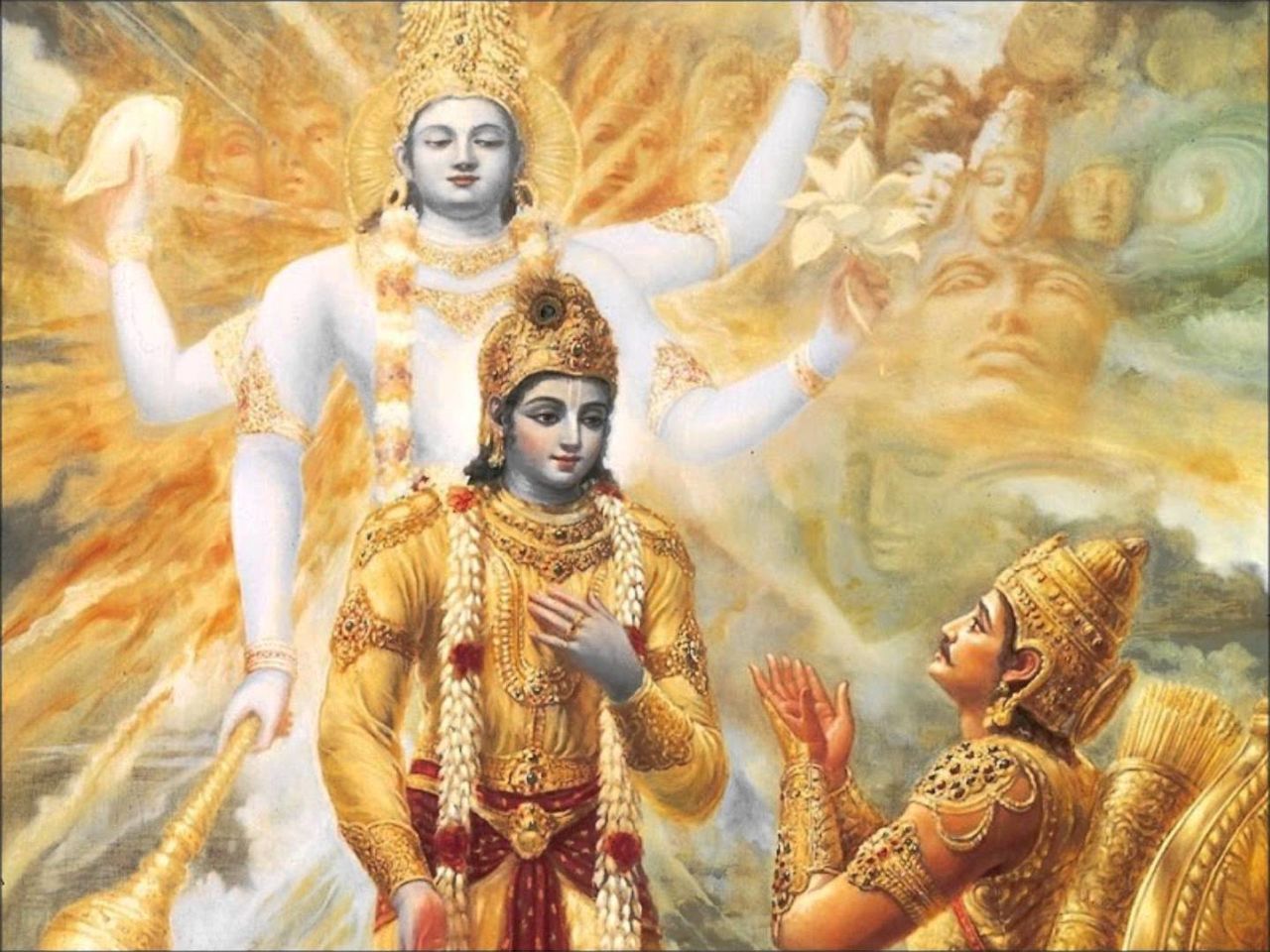
A differenza di molte scuole pseudo-spirituali new age che affermano l’impossibilità di regredire in forme animali una volta raggiunta la forma umana, la tradizione vedica afferma invece che questa possibilità esiste ed è molto probabile in una società come quella moderna. Perché ciò accade? Perché la forma che l’anima assume nella vita successiva incarna perfettamente lo stato di coscienza dominante; se l’essere umano ha scelto di degradarsi riducendo la propria coscienza allo stato tamasico tipico degli animali il karma lo esaudisce. È sempre il nostro desiderio che decide. Se desideriamo regredire torneremo ad assumere la forma di un cane o di una tigre…Ecco perché tutti i saggi autentici affermano in modo perentorio di abbandonare totalmente ogni tipo di influenza tamasica, in particolare quella dei cibi e delle droghe. I cibi tamasici sono così descritti: “ Il cibo cotto più di tre ore prima d’essere consumato, privo di gusto, decomposto e putrido, e il cibo costituito di avanzi e di cose intoccabili, piace a coloro che sono dominati dalla più oscura ignoranza.” Ecco perché l’alimentazione vegetariana è decisiva per una società etica e sana nel corpo e nella mente, poiché il consumo di carne, pesce e uova è del tutto tamasico. Il verso della Bhagavad-Gītā è molto chiaro, parla esplicitamente di cibi in decomposizione e putridi.
Cosa vi è di più decomposto e putrido di un cadavere? Eppure il mondo intero considera, come diceva Plutarco, questi cadaveri dei manicaretti squisiti…È l’influenza del Tamas, dell’ignoranza, che impedisce a molte persone di rendersi conto che stanno mangiando un corpo morto…Non a caso i grandi artisti e i grandi filosofi dell’umanità erano vegetariani , o, come si diceva nell’antichità, pitagorici. Oggi molte ricerche mediche hanno ormai dimostrato che non solo non è necessario per l’essere umano nutrirsi di carne e pesce, ma questi “cibi” producono nell’organismo umano gravissime malattie, come tumori e problemi circolatori e cardiaci. Ma la conoscenza vedica, sintetizzata nella Bhagavad-Gītā, affermava da millenni: “ Chi rinuncia alla carne e all’alcol, è bene intenzionato, si impegna ed è puro, non soffrirà di pazzia, interna o esterna che sia la causa. Egli conserva le sue facoltà mentali.” Queste parole tramandate dalla medicina āyurvedica si basano sulla conoscenza dei tre guna e sugli effetti che le sostanze tamasiche hanno sul corpo e sulla mente. In un verso dello Srimad-Bhagavatam possiamo leggere:
“ Quando l’influenza dell’ignoranza prevale sulla passione e sulla virtù, copre la coscienza individuale e rende sciocchi e ottusi. Una persona influenzata dall’ignoranza cade nel lamento e nell’illusione, dorme eccessivamente, nutre false speranze e ha un comportamento violento verso gli altri.”
Lo stato tamasico è devastante quando diventa lo stato predominante. Ogni Guna cerca d’avere il predominio, ma sta allo sforzo di ogni essere umano coltivare il sattva, evitando così di sprofondare in uno stato di coscienza del tutto oscurato. La famiglia e le scuole dovrebbero essere realtà dove viene sviluppato il guna della virtù, per permettere alla nostra identità spirituale di poter trascendere i vincoli materiali e realizzare, un giorno, la perfetta felicità. Krishna espone anche ad Uddhava la scienza dei e ciò sta a dimostrare l’enorme importanza che questa conoscenza esoterica riveste nell’ambito della vita umana. Mentre gli animali non possono coltivare conoscenza e spiritualità la forma umana offre questa straordinaria possibilità. Non sprechiamola seguendo le abitudini tamasiche di una società che ignora la reali influenze che il mondo materiale esercita sulla nostra psiche. Come disse Srila Prabhupada: “ La natura materiale non ci darà tanto facilmente la libertà.”

La natura materiale è progettata proprio per legarci ad essa, per renderci schiavi. Tutte le tradizioni esoteriche non hanno dubbi al riguardo. Ma questa schiavitù è stata una nostra scelta, così come può essere una nostra scelta uscire spezzare queste catene. La scienza e la pratica della Bhakti può portarci alla libertà. Ma molti hanno il terrore della libertà e preferiscono la sicurezza della schiavitù: schiavitù mentale, fisica, new age…Alcuni credono persino d’essere liberi quando, invece, le catene sono più strette che mai. La libertà ha il sapore non-mentale della pura energia divina, e per raggiungerla occorre morire per vivere. Ogni guna manifesta un certo tipo di falsa personalità; questa falsa personalità deve morire perché possa manifestarsi la nostra pura coscienza.
Ma si tratta della morte di una maschera, di un personaggio teatrale, che ci ha traghettati verso il vero volto dell’anima.
Valentino Bellucci
[:en]

Now I open my eyes and tell you that the food is as sacred as the host, because it’s all
nature, it is God himself who has prepared him with His quintessence.
O. M. Aïvanhov
We now come to a very important topic, unfortunately underestimated by today’s psychology, the food. Actually in the Vedic culture it is considered food everything that comes in contact with our senses. So food is not only what we eat, but also what we see, what we hear, what we touch and what we smell. The viewing and listening are the two most important sources, since the mind is very much influenced by the images and sounds. So when Krishna is Sattvic food makes reference to what is cooked and then eaten, but also refers to images and sounds sattvic. Because the solid food and the liquid is taken more than once a day and every day Vedic culture it rightly considers essential.
What we eat structures our mind. This notion is also expressed in Chandogya Upanishads: “The food eaten is divided into three parts: the grossest part becomes excrement, the thinnest part of the body becomes, the more subtle part becomes mind. […] When the food is pure, there is purity of mind. “Any contact with the material energy means contact with the gunas, with a certain structure and vibration; the vibration of sattvic foods makes the sattvic mind, like fire burning everything with which it comes into contact. What are these foods? Krishna has succinctly described them: they are healthy foods, juicy, suitable for human health. yogic tradition indicates in this regard vegetarianism as power Satwa; grains, fruits, vegetables, milk lead the mind to a sattvic vibration, ready for the knowledge and happiness. We can already understand from what the serious damage that non-vegetarian habits of modern society make to the human psyche. Today many scientific studies are corroborating this thesis Vedic, as the research of Dr. Calgary Canadian Kaplan University, who demonstrated how a vegetarian diet is crucial to avoid depression. In fact, vitamins and minerals found in fruits and vegetables affect the mind in an anti-depressant, reducing even anxiety. Dr Eric Brunner said in a study published in the British Journal of Psychiatry found that antioxidant levels in fruits and vegetables have a significant protective effect against depression. Krishna indicates not only vegetarian food but healthy, natural foods.

With food industries were born foods with chemical additives, such as dyes and preservatives, which have a negative effect on the mind, not covered by the naturalness of Sattva: “The artificial food colorings should be banned in the interest of public health. A group of researchers from Southampton University says that the removal of these substances from foods would reduce the levels of hyperactivity in young children. July 20, 2010 came into force the European Regulation no. 1333/2008, which requires the phrase ‘may adversely effect on activity and attention in children’ on the labeling of products colored with E102, E104, E110, E122, E124 and E129. ” Vedic knowledge has always been this subtle knowledge that helps us to live in a healthy way; modern society, however, is sinking into catastrophe and hardly scientific research finds those truths that the Bhagavad-Gita sends thousands of years. The reader knows now how to eat to have a peaceful and enlightened mind. The Vedic scriptures also indicate sattvic places: forests, woods, countryside; live in contact with nature develops Sattva. Let’s look at the other two gunas, Rajas and Tamas. About the Rajas Krishna says:
rajo rāgātmakam viddhi / Trisna-sanga-samudbhavam / tan nibadhnāti Kaunteya / karma-sangena dehinam (chap. 14, verse 7)
Know that Rajas, O son of Kunti, is characterized by ardent passions; it is a source of greed and attachment and binds the soul consciousness to the fruits of actions.
The Rajas, or rajo-guna, is responsible for the actions and fills the entire cosmos of passion; while sattva guaranteed the balance and harmony of the rajas is the size of burning desires, the unquenchable fire of those who want to enjoy the illusions of the material world. What are the effects of this guna of those who are dominated? It is easy to guess, but Krishna says so: “… from the Rajas develops greed” This is why the Rajasic people can never be satisfied, always anxious for the realization of their desires, and never satisfied, even when something ephemeral It is realized. In this state of consciousness the soul experiences anxiety, distress and certainly can not devote themselves to knowledge. That’s why this guna should never prevail. therefore necessary to avoid the company of people dominated by Rajas. Even rajasic places are advised.

The Vedic scriptures consider cities places where the predominant rajo-guna. As for the food Krishna says: “I too bitter foods, too sour, salty, spicy, pungent, dry and burning are preferred by those who are dominated by Rajas. They generate suffering, misery and disease. “A plant-based food overcooked or too salty and spicy is to be avoided since it increases the rajasic aspect of our mind. It should be noted that each guna tends to want to dominate and tries to maintain its influence; We cultivate a more guna and the more difficult to escape its influence; that’s why a person dominated by a guna will tend to look for food here and those companies that provide protection. But the gunas to be abandoned is the most Tamas. The passionate man can also go with a certain simplicity to the virtue of Sattva, but one who is immersed in the darkness of Tamas is likely to remain there for many lives … So Krishna describes the third and final gunas:
Tamas you ajnana-jam viddhi / Mohanam sarva-dehinam / pramādālasya-nidrābhis / tan nibadhnāti bharata.
Know, O descendant of Barata, that the Tamas of ignorance and is the cause of illusion for all souls; it binds the conscience to madness, laziness and sleep.
While the human being rajasic can still see the light of sattva, being lost in Tamas threatens to plunge more devastating darkness. That’s why a real knowledge of the three gunas should be the basis of a truly civil society; the influence of Tamas should be avoided as much as possible through proper education, but the problem of the modern society consists precisely in the fact that it is dominated by Tamas own … This makes this knowledge invaluable. Consciousness trapped in the prison Tamas suffers terribly and causes suffering to all other beings; the human being, in his folly, laziness and sleepiness, how it can help himself and others. It is immediately clear that the use of drugs is totally tamasic. Yet modern society is very forgiving (for obvious economic interests) to substances like nicotine, alcohol, caffeine, as if it were a minor injury. But the effect that these substances have on the body and mind is totally tamasic. The Bhagavad-Gita is very serious about it, especially when he says: “… those who die under the influence of Tamas birth in the animal kingdom.”

The Vedic scriptures consider cities places where the predominant rajo-guna. As for the food Krishna says: “I too bitter foods, too sour, salty, spicy, pungent, dry and burning are preferred by those who are dominated by Rajas. They generate suffering, misery and disease. “A plant-based food overcooked or too salty and spicy is to be avoided since it increases the rajasic aspect of our mind. It should be noted that each guna tends to want to dominate and tries to maintain its influence; We cultivate a more guna and the more difficult to escape its influence; that’s why a person dominated by a guna will tend to look for food here and those companies that provide protection. But the gunas to be abandoned is the most Tamas. The passionate man can also go with a certain simplicity to the virtue of Sattva, but one who is immersed in the darkness of Tamas is likely to remain there for many lives … So Krishna describes the third and final gunas:
Tamas you ajnana-jam viddhi / Mohanam sarva-dehinam / pramādālasya-nidrābhis / tan nibadhnāti bharata.
Know, O descendant of Barata, that the Tamas of ignorance and is the cause of illusion for all souls; it binds the conscience to madness, laziness and sleep.
While the human being rajasic can still see the light of sattva, being lost in Tamas threatens to plunge more devastating darkness. That’s why a real knowledge of the three gunas should be the basis of a truly civil society; the influence of Tamas should be avoided as much as possible through proper education, but the problem of the modern society consists precisely in the fact that it is dominated by Tamas own … This makes this knowledge invaluable. Consciousness trapped in the prison Tamas suffers terribly and causes suffering to all other beings; the human being, in his folly, laziness and sleepiness, how it can help himself and others. It is immediately clear that the use of drugs is totally tamasic. Yet modern society is very forgiving (for obvious economic interests) to substances like nicotine, alcohol, caffeine, as if it were a minor injury. But the effect that these substances have on the body and mind is totally tamasic. The Bhagavad-Gita is very serious about it, especially when he says: “… those who die under the influence of Tamas birth in the animal kingdom.”

The material nature is precisely designed to bind to it, to make us slaves. All esoteric traditions have no doubt about that. But this slavery was our choice, so how can it be our choice out break these chains. The science and practice of Bhakti can lead us to freedom. But many are terrified of freedom and prefer the security of slavery: slavery mental, physical, new age … Some believe even to be free when, in fact, the chains are closer than ever. Freedom has a non–mental flavor of pure divine energy, and to reach it you must die to live. Each guna manifests some type of false personality; this false personality must die before it can manifest our pure consciousness.
But it is the death of a mask, of a dramatic character, which shuttled us to the true face of the soul.
Valentino Bellucci
[:]
